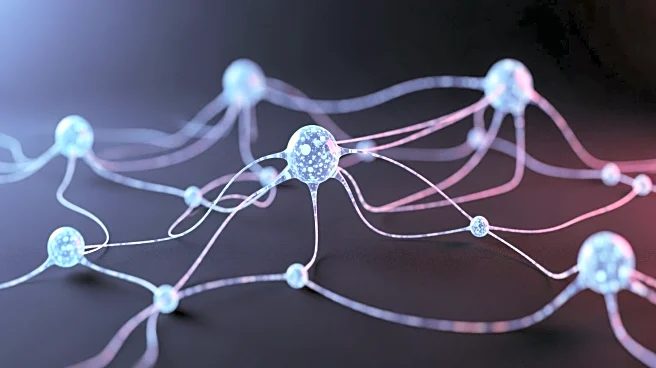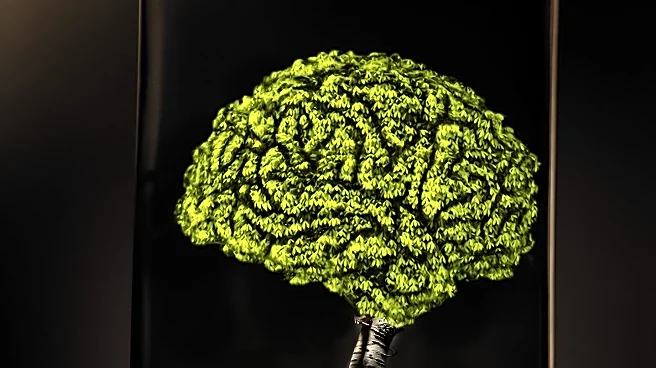What's Happening?
Researchers at the University of Sydney have identified a detailed pain map within the human brainstem, which regulates pain relief based on the specific body part affected. This discovery, published in Science,
utilized advanced 7-Tesla functional magnetic resonance imaging (fMRI) to observe how the brainstem's regions, particularly the periaqueductal grey (PAG) and the rostral ventromedial medulla (RVM), manage pain through the placebo effect. The study involved 93 volunteers who were subjected to heat-induced pain, followed by the application of a placebo cream. The research found that different parts of the brainstem are activated depending on whether the pain is in the face, arm, or leg, suggesting a highly coordinated and anatomically precise system for pain management.
Why It's Important?
This breakthrough offers a potential pathway to develop non-opioid pain relief methods, which could significantly impact the treatment of chronic pain. By understanding the brain's natural pain relief system, researchers can design more effective and personalized therapies that target specific areas of the body without the widespread side effects associated with opioid use. This could be particularly beneficial for individuals suffering from chronic pain localized to specific body parts, providing a safer alternative to traditional opioid-based treatments. The study also suggests that cannabinoids might play a role in localized pain control, offering a new avenue for pain management research.
What's Next?
The findings pave the way for further research into non-invasive therapies that could exploit the brain's natural pain relief mechanisms. Future studies may focus on developing treatments that specifically target the identified brainstem regions, potentially leading to more precise and effective pain management strategies. Additionally, the research challenges existing assumptions about placebo pain relief, indicating a need to explore cannabinoid activity in pain management further. This could lead to the development of new drugs or therapies that provide targeted pain relief without the risks associated with opioids.
Beyond the Headlines
The study's implications extend beyond immediate pain relief, as it challenges the traditional understanding of how pain is managed in the brain. By revealing a spatially organized pain control system, the research could influence future neurological studies and the development of therapies for other conditions involving the brainstem. The potential role of cannabinoids in pain management also opens up discussions about the legal and ethical considerations of using such substances in medical treatments, potentially influencing public policy and healthcare practices.











